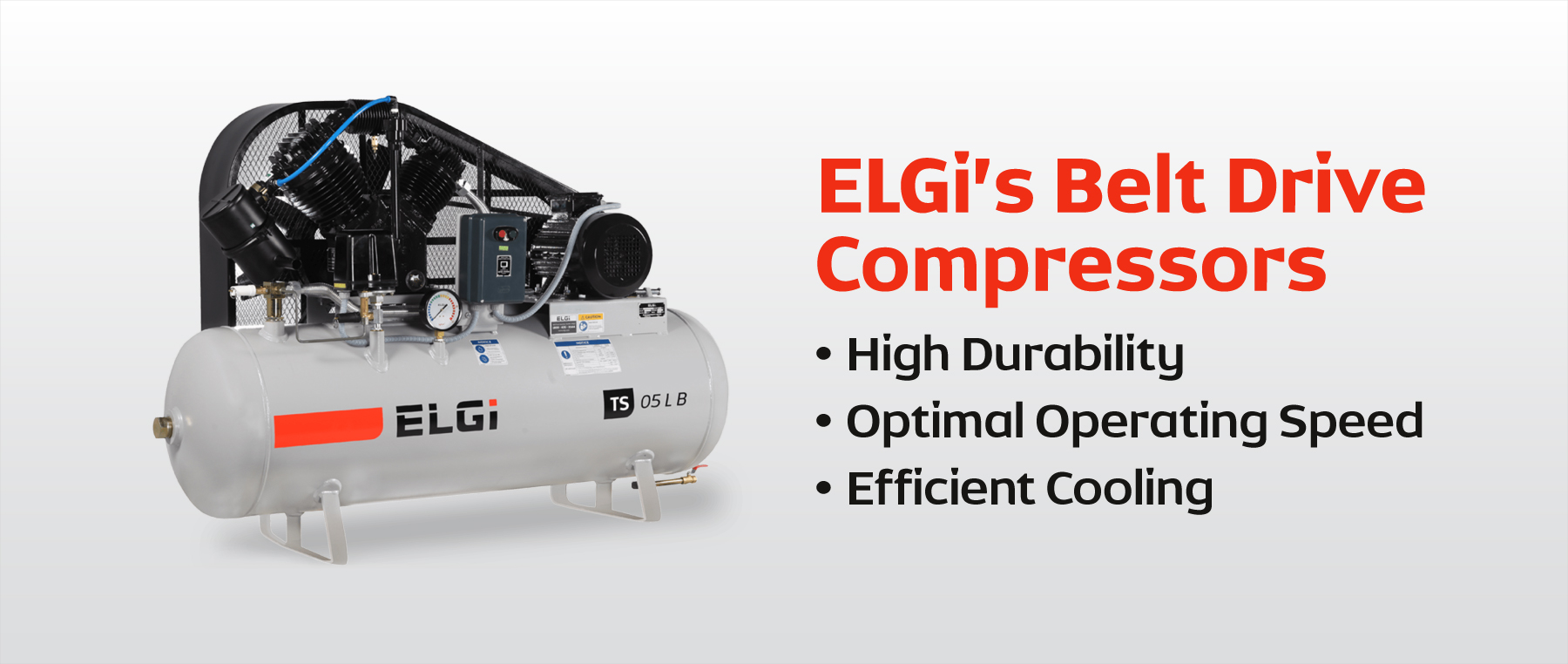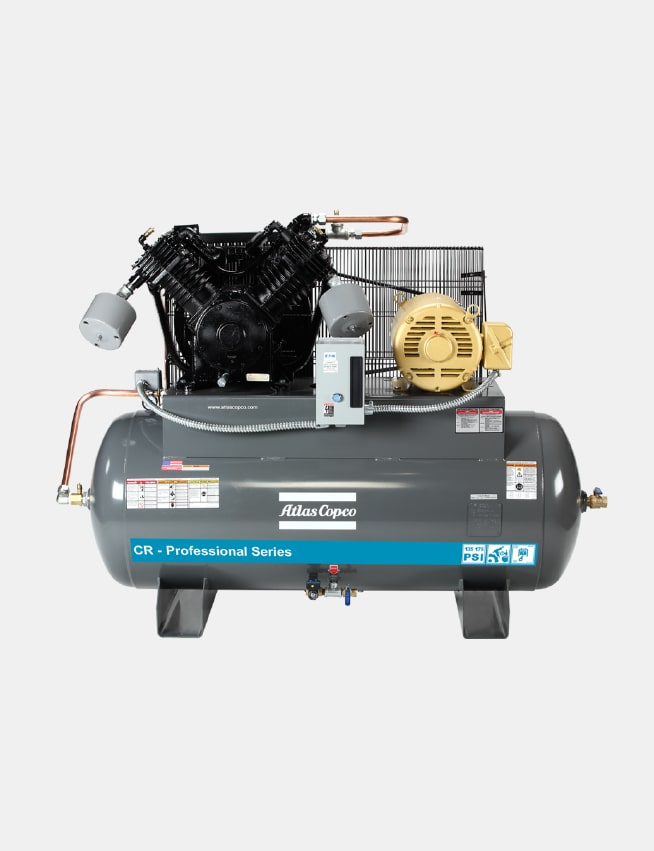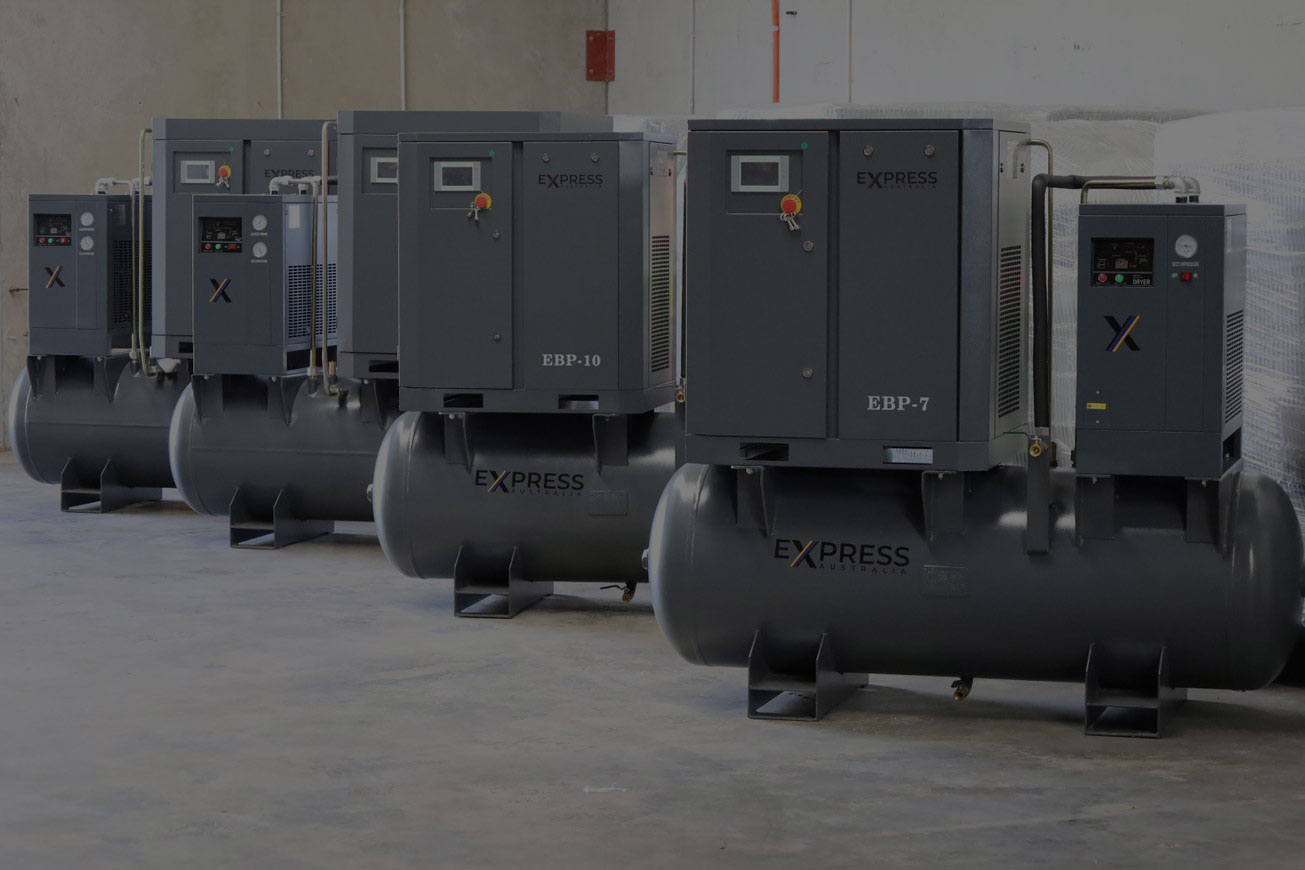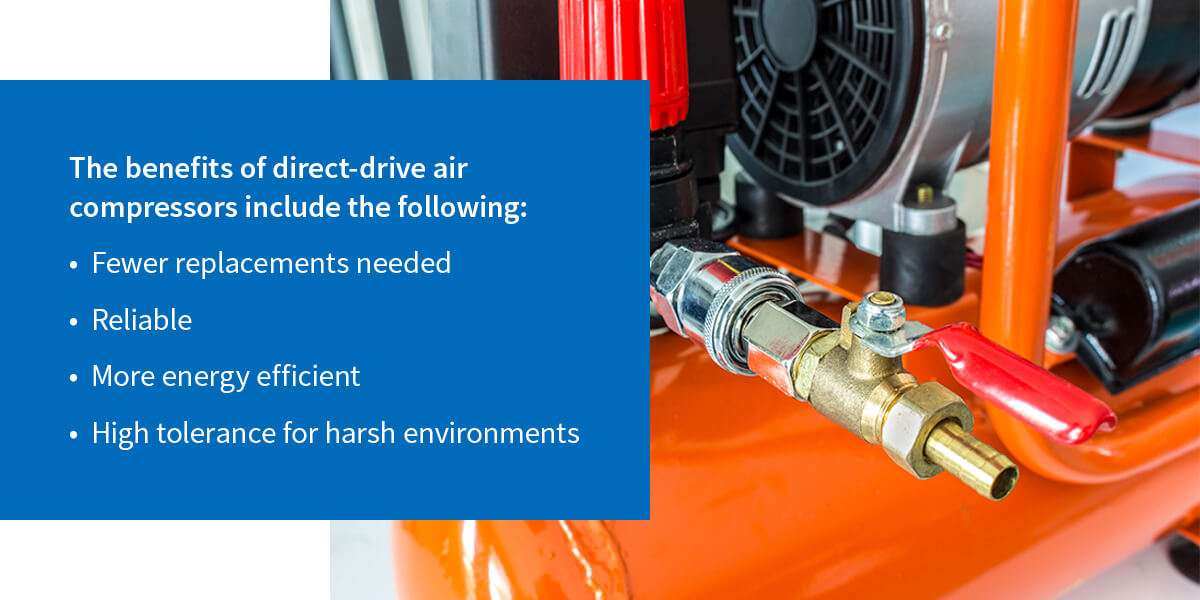I. Introduction
When choosing an air compressor, one of the crucial decisions is whether to go for a direct drive vs belt drive model. Understanding these two types’ differences can help you determine which one is right for your specific needs. In this article, we will explore the pros and cons of each option so that you can make an informed decision.
Understanding the Difference Between Direct Drive and Belt Drive Air Compressors
Direct Drive Air Compressors:
Direct-drive air compressors are compact and lightweight, making them highly portable and easily transported. They feature a motor directly attached to the compressor pump, resulting in a more efficient power transfer. The absence of a belt drive system also means less maintenance, as there are no belts to replace or adjust. Direct drive compressors are typically less expensive and are suitable for light to medium-duty tasks.
Belt Drive Air Compressors:
Belt-drive air compressors feature a motor that drives the compressor pump through a belt and pulley system. This setup allows for greater flexibility regarding motor placement, as the motor can be positioned farther away from the pump. Belt drive compressors are known for their quieter operation, as the belt absorbs much of the noise and vibration generated by the motor. They are also designed for heavy-duty tasks and can handle continuous operations for extended periods.
When choosing between direct drive and belt drive air compressors, consider the following factors:
1. Power Requirement: A direct drive model may be sufficient if you need an air compressor for light to medium-duty tasks. However, a belt drive compressor is a better option if you anticipate heavy-duty or continuous use.
2. Portability: A direct drive compressor’s compact and lightweight design makes it the ideal choice if you need a highly portable compressor for jobs requiring frequent movement.
3. Noise Level: If the noise level is a concern, a belt drive compressor’s quieter operation may be more suitable, especially if you work in a noise-sensitive environment.
4. Budget: Direct drive compressors are generally less expensive compared to belt drive compressors. A direct drive model can provide a cost-effective solution if you are on a tight budget.
The choice between direct drive and belt drive air compressors depends on your specific needs and preferences. Considering power requirements, portability, noise level, and budget will help you make an informed decision.

II. Direct Drive Air Compressors
Direct-drive air compressors are a popular choice among both professionals and DIY enthusiasts. These compressors are known for their efficiency and compact design. Here are some key features and benefits of direct-drive air compressors:
Direct Drive Air Compressor Features and Benefits
1. Compact Size: Direct-drive air compressors are typically more compact and lightweight than their belt-drive counterparts. This makes them easier to transport and store, ideal for those with limited space.
2. Efficiency: Direct-drive air compressors are designed for maximum efficiency. They have fewer moving parts, reducing energy loss and improving overall performance.
3. Cost-Effective: Direct-drive air compressors are generally more affordable than belt-drive models due to their simpler design. This makes them a cost-effective choice for those on a budget.
4. Low Maintenance: Direct-drive air compressors require minimal maintenance due to their simple construction. They often have sealed bearings that do not require regular lubrication.
5. Quick Start-Up: Direct drive air compressors directly connect the motor and the pump, resulting in quick start-up times. They are ready to use almost instantly, saving you valuable time.
Applications and Uses of Direct Drive Air Compressors
Direct-drive air compressors are versatile and can be used for various applications. Some common uses include:
• Inflating Tires: Direct-drive air compressors are perfect for inflating tires, whether on cars, bicycles, or other vehicles.
• Powering Pneumatic Tools: These compressors have sufficient power to run pneumatic tools such as nail guns, impact wrenches, and paint sprayers.
• DIY Projects: Direct-drive air compressors are an excellent choice for DIY projects, such as powering airbrushes and other small air tools.
• Mobile Applications: Due to their compact size and portability, direct-drive air compressors are ideal for mobile applications like construction sites and roadside assistance.
Direct-drive air compressors offer a compact and efficient solution for various air-powered tasks. Whether you’re a professional contractor or a hobbyist, these compressors provide the power and reliability you need at an affordable price point.

III. Belt Drive Air Compressors
Regarding air compressors, belt-drive air compressors are popular among professionals and DIY enthusiasts. These compressors are known for their durability, efficiency, and versatility.
Belt Drive Air Compressor Features and Benefits
Here are some key features and benefits of belt-drive air compressors:
1. Quiet Operation: Belt-drive air compressors are generally quieter than direct-drive compressors. The belt-driven system helps reduce noise levels, making them ideal for indoor use or in noise-sensitive environments.
2. Longer Lifespan: The belt drive system allows for lower operating speeds, which results in less wear and tear on the compressor components. This can increase the compressor’s lifespan and reduce the need for frequent maintenance or repairs.
3. Higher Airflow: Belt-driven air compressors typically have a higher airflow rate than direct-drive compressors. This means they can provide more power and deliver a larger volume of compressed air, making them suitable for heavy-duty applications or tools that require high airflow.
4. Versatility: Belt-drive air compressors are versatile and can handle various applications. Whether you need to power pneumatic tools, inflate tires, or run airbrushes, a belt drive compressor can accommodate various tasks.
Applications and Uses of Belt Drive Air Compressors
Due to their power and versatility, belt-drive air compressors are commonly used in various industries and applications. Here are some popular uses:
• Construction and Carpentry: Belt drive air compressors are often utilized in construction sites and carpentry workshops to power pneumatic tools like nailers, staplers, and sanders. The high airflow and consistent pressure make these compressors ideal for heavy-duty tasks.
• Automotive and Tire Inflation: Belt-drive air compressors are commonly used in automotive repair shops and tire service centers. They can quickly inflate tires, remove vehicle debris, and support various pneumatic automotive tools like impact wrenches and paint sprayers.
• Industrial Manufacturing: Many industrial manufacturing processes rely on compressed air for power and operation. Belt-drive air compressors can provide the necessary airflow for powering machinery, operating pneumatic controls, and ensuring smooth production processes.
In summary, belt drive air compressors offer quiet operation, longer lifespan, higher airflow, and versatility. They suit various applications, including construction, automotive, and industrial manufacturing industries. Consider your specific needs and requirements when choosing between a belt drive and a direct drive air compressor to ensure you select the right one for your tasks.

IV. Comparison between Direct Drive and Belt Drive Air Compressors
When choosing an air compressor, one of the most important decisions you’ll need is whether to go for a direct drive or belt drive model. Both types have advantages and disadvantages, so it’s essential to understand their key differences. Here’s a comparison to help you decide which type is right for you.
Performance and Power Efficiency Comparison
Direct Drive:
- Direct-drive air compressors are typically more compact and lightweight than belt-drive models, making them easier to transport and store.
- They have fewer moving parts, resulting in fewer energy losses and higher power efficiency.
- Direct-drive compressors are generally more suitable for smaller applications and lighter tasks.
Belt Drive:
- Belt-drive air compressors are generally larger and heavier than direct-drive models, requiring more space.
- They often have a larger motor for higher airflow and pressure output.
- Belt drive compressors are generally more suitable for heavy-duty applications and continuous operation.
Maintenance and Noise Levels Comparison
Direct Drive:
- Direct-drive compressors require less maintenance since they have fewer moving parts.
- They generate less noise during operation, making them more suitable for indoor or noise-sensitive environments.
Belt Drive:
- Belt drive compressors require more maintenance since the belts must be regularly inspected and replaced.
- They can generate more noise during operation due to the pulley and belt system.
Cost and Affordability Comparison
Direct Drive:
- Direct-drive compressors are generally more affordable and cost-effective.
- They require less maintenance, leading to lower long-term costs.
Belt Drive:
- Belt drive compressors are generally more expensive upfront.
- They may require more maintenance, leading to higher long-term costs.
Choosing between a direct drive and belt drive air compressor depends on your specific needs and preferences. A direct drive compressor may be better if you have smaller tasks requiring portability. However, a belt drive compressor may be more suitable if you need higher airflow and continuous operation.
When deciding, consider factors such as performance, power efficiency, maintenance requirements, noise levels, and cost. It’s also a good idea to consult with a professional or do further research to ensure you choose the right air compressor.
V. Factors to Consider When Choosing Between Direct Drive and Belt Drive Air Compressors
When choosing between a direct drive and belt drive air compressor, it’s essential to consider several factors to determine which option is right for your needs. Here are three important factors to consider:
1. Power and Capacity Requirements
Direct Drive: Direct drive air compressors are known for their compact size and lightweight design. They are typically smaller and have less power than belt drive compressors. Direct-drive compressors are suitable for light to medium-duty tasks that don’t require high power. They are commonly used in home workshops or small businesses.
Belt Drive: Belt-drive air compressors have larger power and capacity than direct-drive compressors. They are ideal for heavy-duty tasks that require more power, such as automotive repairs or industrial applications. Belt drive compressors can deliver a higher air volume and maintain higher pressures for longer.
Consider your intended applications’ specific power and capacity requirements to determine whether a direct drive or belt drive air compressor is the better choice.
2. Portability and Space Constraints
Direct Drive: If portability is a priority and space is limited, a direct-drive air compressor may be the better option. Direct drive compressors are more compact and lightweight, making them easier to transport from one job site to another. They are also suitable for smaller workspaces where mobility and space efficiency are essential.
Belt Drive: Belt drive air compressors are typically larger and heavier, making them less portable than direct drive compressors. If portability is not a concern, or if you have a dedicated workshop or industrial space with more room, a belt drive compressor may be a viable choice.
Consider whether portability and space constraints are crucial factors for your specific needs.
3. Budget and Long-Term Investment Considerations
Direct Drive: Direct-drive air compressors are often more affordable upfront, making them a cost-effective choice, especially for light-duty applications. However, they may require more frequent maintenance and have a shorter lifespan than belt drive compressors.
Belt Drive: Belt drive air compressors are usually more expensive upfront due to their larger size and higher power capabilities. However, they tend to be more durable, have longer lifespans, and require less maintenance over time. They are a wise long-term investment if you anticipate heavy and continuous use.
Consider your budget and long-term investment goals when deciding between a direct drive or belt drive air compressor.
By considering these essential factors, you can make an informed decision and choose the right type of air compressor that best fits your specific needs and requirements.

VI. Conclusion
Choosing the Right Air Compressor for Your Needs
When selecting an air compressor, understanding the differences between direct drive and belt drive models is crucial. Here are some factors to consider when making your decision:
1. Power and Performance: Direct drive compressors are typically more compact and lightweight, making them suitable for smaller applications. They are best suited for tasks that require less power and continuous operation. On the other hand, belt drive compressors offer more power and are better suited for heavy-duty applications that require a higher air volume and pressure.
2. Noise Level: If noise is a concern in your workspace or environment, you may want to consider a belt drive compressor. Belt drive models tend to operate at a lower noise level than direct drive compressors, which may be important if you need to work in a quieter environment.
3. Maintenance and Durability: Belt drive compressors generally require more maintenance due to the presence of belts and pulleys. However, they are often considered more durable and have a longer lifespan than direct-drive compressors. Direct drive compressors, on the other hand, are relatively low maintenance but may have a shorter lifespan due to the absence of belts.
4. Portability: If portability is crucial, direct drive compressors are usually more lightweight and compact, making them easier to transport. With their larger size and heavier build, Belt drive compressors may be more challenging to move around or transport to different job sites.
Key Points to Remember
To summarize the differences between direct drive and belt drive air compressors:
• Direct drive compressors: Compact, lightweight, suitable for smaller applications, less power, continuous operation, higher noise level, low maintenance.
• Belt drive compressors: More power, heavy-duty applications, higher air volume and pressure, lower noise level, require more maintenance, greater durability.
When deciding which type of air compressor is right for you, consider your specific needs, such as the intended application, power requirements, noise preferences, and portability requirements. It’s also important to factor in your budget, as belt drive compressors may be more expensive initially, but their long-term durability can provide value over time.
By carefully evaluating these factors, you can choose the air compressor that will best meet your needs and help you accomplish your projects efficiently and effectively.
FAQs
Is a belt drive better than a direct drive air compressor?
The answer depends on your specific needs. Belt-drive compressors have lower part replacement costs and simpler maintenance, but they require more frequent inspections of the belts and pulleys. On the other hand, replacing parts on a direct-drive air compressor typically costs more, but these models need less frequent repairs or maintenance, making them more reliable.
What is the advantage of direct drive over belt drive in the drive system of compressors?
Direct-drive air compressors have fewer moving parts, which means less maintenance, less wear-and-tear, and potentially a longer lifespan. They can also handle temperatures below freezing and high summer, offering incredible versatility.
Why are belt-driven air compressors better?
Some experts believe a belt drive compressor is better because a properly lubricated belt system will run smoother, benefiting certain applications. Belt-driven systems also allow for greater flexibility, which can be adjusted to deliver varying airflow pressure and capacity.
Source
Liu, X., Zhou, Y., & Ouyang, W. (2019). Loss distribution and performance improvement potential of a 250 kW oil-free turbo compressor. Energy, 166, 359-372. https://doi.org/10.1016/j.energy.2018.10.077 This article analyzes losses in a 250 kW direct drive turbo compressor. It finds the bearings that caused the most losses and suggests design improvements.
Kermeidou, T., Petropoulos, A., & Xyradakis, P. (2018). Energy efficient operation of positive displacement compressors via model-based control. Energy, 144, 1084-1094. https://doi.org/10.1016/j.energy.2017.12.037 This paper model and simulates variable speed control of a reciprocating compressor to improve efficiency compared to fixed speed. Variable speed is easier to implement with direct drive.
Liu, F., Liu, J., & Zhou, F. (2016). Experimental performance comparison of direct-driven and belt-driven air supply using radial turbines. Applied Thermal Engineering, 98, 1134-1143. https://doi.org/10.1016/j.applthermaleng.2015.12.153 This experimental study compared radial turbine performance under direct-driven and belt-driven conditions. It found direct drive had higher efficiency.
Kermeidou, T., Petropoulos, A., & Xyradakis, P. (2016). CFD modeling approaches to the simulation of reciprocating compressors. International Journal of Refrigeration, 64, 140-153. https://doi.org/10.1016/j.ijrefrig.2015.12.017 This paper discusses CFD modeling of reciprocating compressors. It notes belt drives add complexity compared to direct drive systems.

